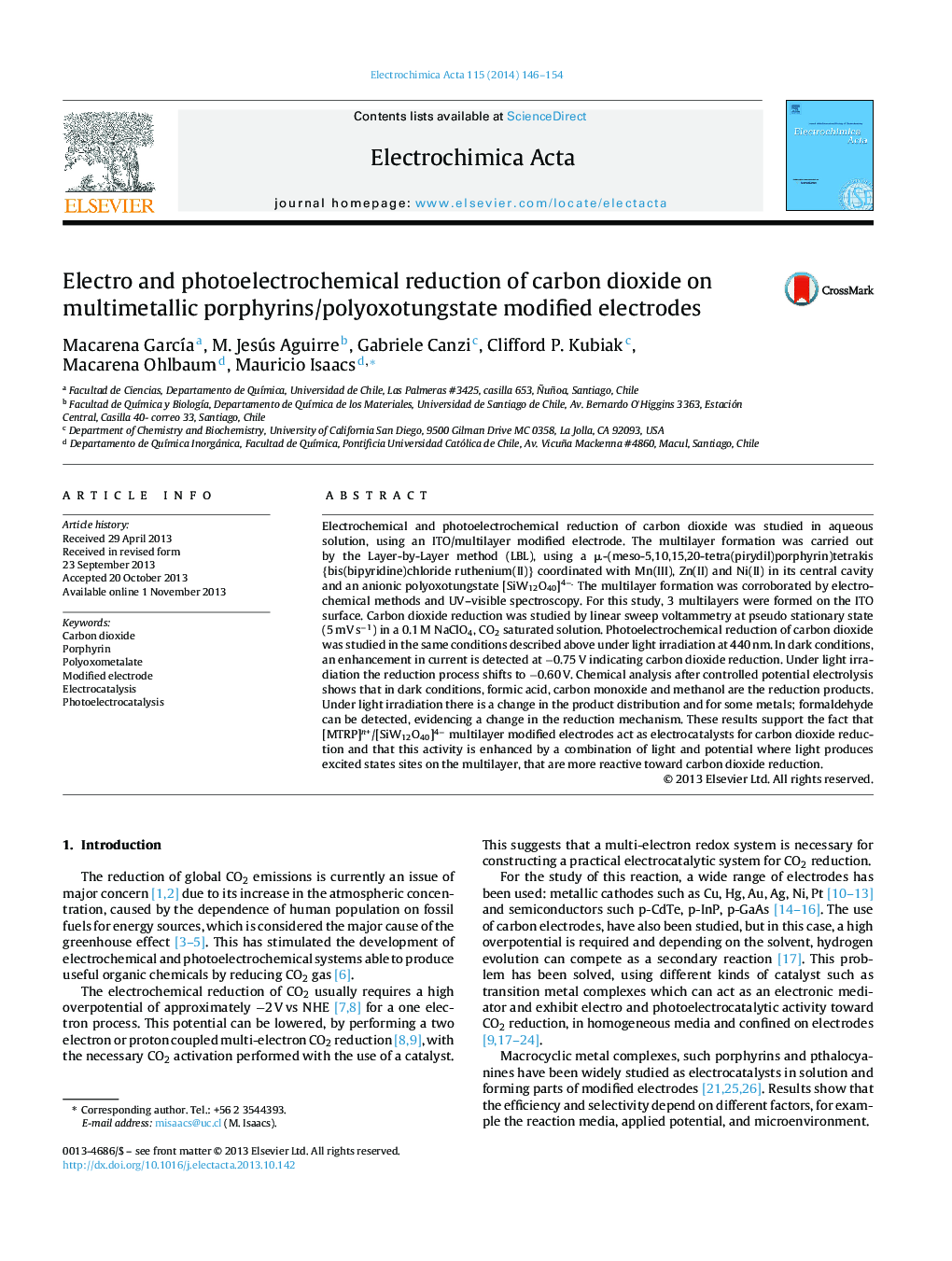| Article ID | Journal | Published Year | Pages | File Type |
|---|---|---|---|---|
| 6614135 | Electrochimica Acta | 2014 | 9 Pages |
Abstract
Electrochemical and photoelectrochemical reduction of carbon dioxide was studied in aqueous solution, using an ITO/multilayer modified electrode. The multilayer formation was carried out by the Layer-by-Layer method (LBL), using a μ-(meso-5,10,15,20-tetra(pirydil)porphyrin)tetrakis {bis(bipyridine)chloride ruthenium(II)} coordinated with Mn(III), Zn(II) and Ni(II) in its central cavity and an anionic polyoxotungstate [SiW12O40]4â. The multilayer formation was corroborated by electrochemical methods and UV-visible spectroscopy. For this study, 3 multilayers were formed on the ITO surface. Carbon dioxide reduction was studied by linear sweep voltammetry at pseudo stationary state (5 mV sâ1) in a 0.1 M NaClO4, CO2 saturated solution. Photoelectrochemical reduction of carbon dioxide was studied in the same conditions described above under light irradiation at 440 nm. In dark conditions, an enhancement in current is detected at â0.75 V indicating carbon dioxide reduction. Under light irradiation the reduction process shifts to â0.60 V. Chemical analysis after controlled potential electrolysis shows that in dark conditions, formic acid, carbon monoxide and methanol are the reduction products. Under light irradiation there is a change in the product distribution and for some metals; formaldehyde can be detected, evidencing a change in the reduction mechanism. These results support the fact that [MTRP]n+/[SiW12O40]4â multilayer modified electrodes act as electrocatalysts for carbon dioxide reduction and that this activity is enhanced by a combination of light and potential where light produces excited states sites on the multilayer, that are more reactive toward carbon dioxide reduction.
Keywords
Related Topics
Physical Sciences and Engineering
Chemical Engineering
Chemical Engineering (General)
Authors
Macarena GarcÃa, M. Jesús Aguirre, Gabriele Canzi, Clifford P. Kubiak, Macarena Ohlbaum, Mauricio Isaacs,
